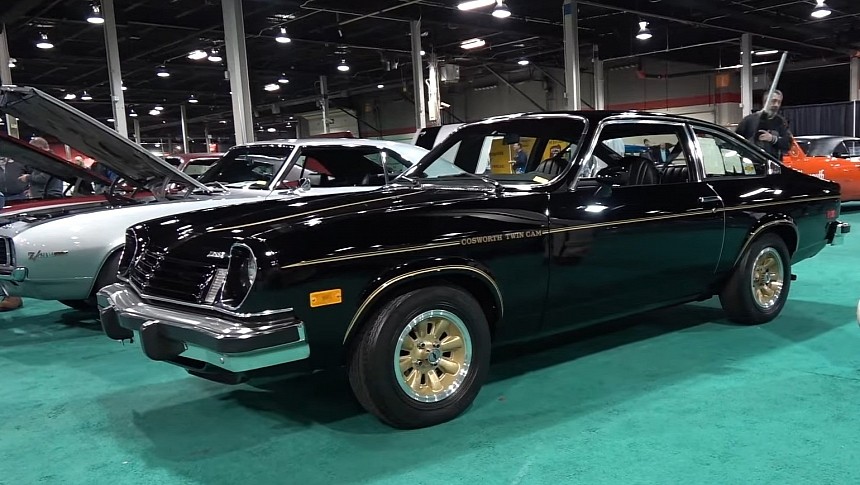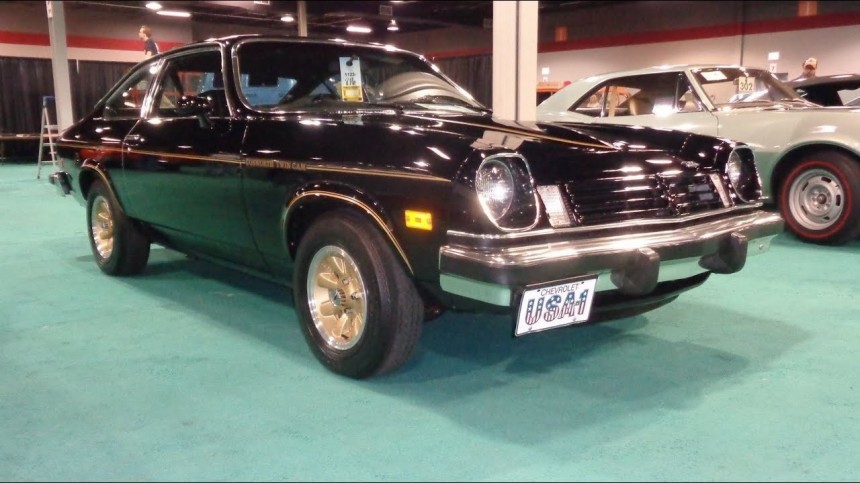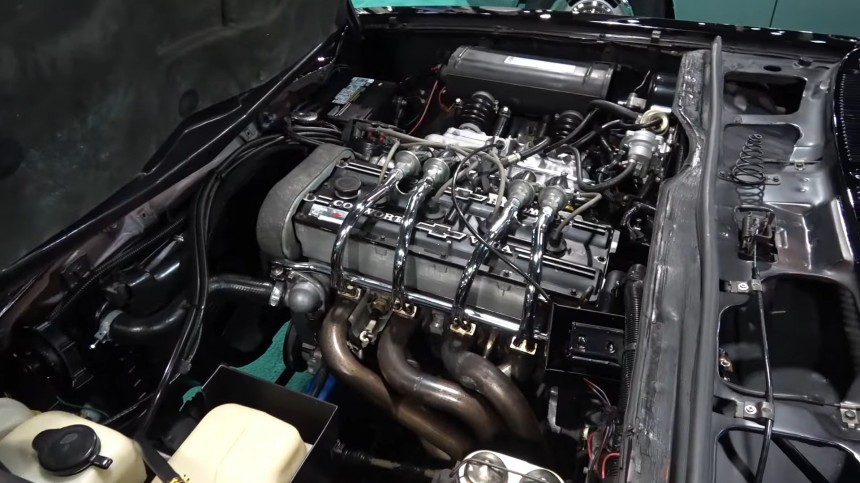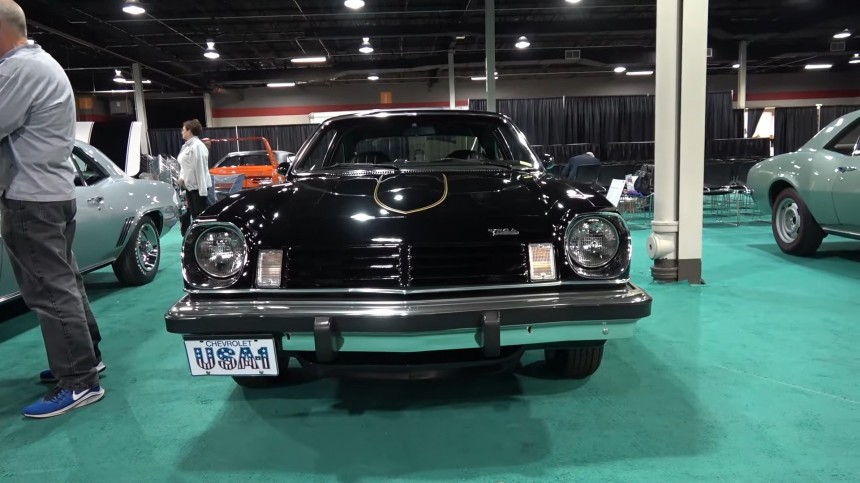The Corvette - which turned 71 on the 11th of this month – wasn’t Chevrolet’s only take at the ‘sportiness in a small package’ routine. The Chevrolet Vega once built the courage to go down the beaten path previously only walked by the ‘Vette. It was a short-lived adventure that lasted for two Malaise years, 1975 and 1976 and revolved around the Cosworth twin-cam 2.0-liter engine that powered the unlikely hero. In a perfectly opposed fashion to America’s Sportscar, the Cosworth Vega was a spectacular failure, leaving us with few and far-between surviving examples.
It’s unclear how many Cosworth-powered Chevy Vegas were effectively built and sold. Still, the most vehiculated number is 3,508 units, unequally split between two short-production model years. In 1975, when it debuted on the market (after a one-year postponement), the Cosworth Vega found 2,061 buyers. Sold doesn’t mean assembled, as the first six examples weren’t sent to dealers, and the inconsistencies build up from there, leading to uncertainty.
The super-rare Vega with a British race-derived engine is one of the rarest Chevrolet nameplates ever made. And yes, the Cosworths weren’t typical Vegas with a smaller, more powerful engine, but a different model altogether. It wasn’t even advertised together with the rest of its eponymous siblings, despite being chips of the same block. That would be the engine block – the same unit Chevrolet had provided the European speed shop to develop a full-blown racing version.
The standard Vegas were powered by an aluminum 140-cubic inch (2.3-liter) inline-four with traditional carburetors and a single overhead camshaft. Cosworth fiddled with the engine, de-stroked it to 122 cubes (2.0 liters), and replaced the cast iron heads with aluminum ones featuring dual cams, one for each of the two pairs of intake and exhaust valves atop every cylinder.
The sportiest Vega had four valves per cylinder and an electronic port injection system. The result was a power surge of almost 50% over the base one-barrel: 110 hp vs. 78 hp (the two-barrel carburetor peaked at 87 hp). Torque-wise, the Cosworth 'pent roof' engine in the Vega churned out 107 lb-ft (145 Nm). An 8,000-RPM tach and a four-speed manual were subtle hints at fun driving in the 2,480-lb (1,125 kg), but that was a far cry from reality.
The numbers America was most interested in from a car with an engine developed by a Formula One builder were sagging badly. From the measly 110 hp (112 PS), the best a driver could hope for was a disappointing 112 mph (180 kph). Even worse, the coffee grinder’s level of torque behind the four-speed translated in a 12.3-second walk (not sprint) from a standstill to 60 mph (97 kph).
And the straw that would break any Detroit camel’s back was the time it took to migrate from one end of a 1,320-foot strip of tarmac to the other: 18.5 seconds. The onlookers could almost use the calendar to measure the quarter-mile performance instead of a stopwatch. Sure, drive tests of the time praised the car’s handling and cornering abilities, but in the All-American 'stoplight grand nationals,' this was about as relevant as the car’s color.
It was up to buyers to decide, as long as they adopted Henry Ford’s philosophy of ‘any customer can have a car painted any color that he wants so long as it is black.’ The Cosworth Chevy debuted with an all-black livery contrasted by gold accents. That wasn’t the saddest news for prospects because the no-option color scheme paled compared to the price tag shock.
$5,916 was a lot of money for a Chevrolet in 1975. Consider that a convertible Corvette was $6,550, had twice as many cylinders, multiple chromatic choices, a reputation, and proper performance (given the era’s standards). Alternatively, the Camaro, another staple of the House of Bowtie, put severe pressure on the hottest Vega, with its most expensive variant starting at $4,070.
The entry Camaro started at $3,550, but the most foot-in-mouth perspective was from a regular Vega’s point of view. A hatchback without the Cosworth plant in it cost $2,900, half the money of the pompous one. That’s precisely the hymn the advertisers marched forth on: ‘Cosworth. One Vega for the Price of Two.’
See the poster in the trunk of this 2,299-mile survivor (3,699 kilometers) shot at the Muscle Car and Corvette Nationals last November by Lou Costabile. The car wears the dash plaque indicating its serial number 1,496 out of the hypothetical 2,061 built for that model year.
The twin-cam Cosworth Vega was rushed into production at the end of March 1975, two days after receiving the EPA approval for the tailpipe emissions. The example shown here is factory-original down to the tires, except for the battery, which is perhaps the easiest to replace part of the car.
With a production run of two years, it’s adventurous for any owner of one to find replacement parts (especially original or NOS). Small wonder since the GM division fell short of its projected build volume of 5,000 units in the two years it manufactured the overpriced small hatch.
The super-rare Vega with a British race-derived engine is one of the rarest Chevrolet nameplates ever made. And yes, the Cosworths weren’t typical Vegas with a smaller, more powerful engine, but a different model altogether. It wasn’t even advertised together with the rest of its eponymous siblings, despite being chips of the same block. That would be the engine block – the same unit Chevrolet had provided the European speed shop to develop a full-blown racing version.
The standard Vegas were powered by an aluminum 140-cubic inch (2.3-liter) inline-four with traditional carburetors and a single overhead camshaft. Cosworth fiddled with the engine, de-stroked it to 122 cubes (2.0 liters), and replaced the cast iron heads with aluminum ones featuring dual cams, one for each of the two pairs of intake and exhaust valves atop every cylinder.
The numbers America was most interested in from a car with an engine developed by a Formula One builder were sagging badly. From the measly 110 hp (112 PS), the best a driver could hope for was a disappointing 112 mph (180 kph). Even worse, the coffee grinder’s level of torque behind the four-speed translated in a 12.3-second walk (not sprint) from a standstill to 60 mph (97 kph).
And the straw that would break any Detroit camel’s back was the time it took to migrate from one end of a 1,320-foot strip of tarmac to the other: 18.5 seconds. The onlookers could almost use the calendar to measure the quarter-mile performance instead of a stopwatch. Sure, drive tests of the time praised the car’s handling and cornering abilities, but in the All-American 'stoplight grand nationals,' this was about as relevant as the car’s color.
$5,916 was a lot of money for a Chevrolet in 1975. Consider that a convertible Corvette was $6,550, had twice as many cylinders, multiple chromatic choices, a reputation, and proper performance (given the era’s standards). Alternatively, the Camaro, another staple of the House of Bowtie, put severe pressure on the hottest Vega, with its most expensive variant starting at $4,070.
The entry Camaro started at $3,550, but the most foot-in-mouth perspective was from a regular Vega’s point of view. A hatchback without the Cosworth plant in it cost $2,900, half the money of the pompous one. That’s precisely the hymn the advertisers marched forth on: ‘Cosworth. One Vega for the Price of Two.’
The twin-cam Cosworth Vega was rushed into production at the end of March 1975, two days after receiving the EPA approval for the tailpipe emissions. The example shown here is factory-original down to the tires, except for the battery, which is perhaps the easiest to replace part of the car.
With a production run of two years, it’s adventurous for any owner of one to find replacement parts (especially original or NOS). Small wonder since the GM division fell short of its projected build volume of 5,000 units in the two years it manufactured the overpriced small hatch.
























